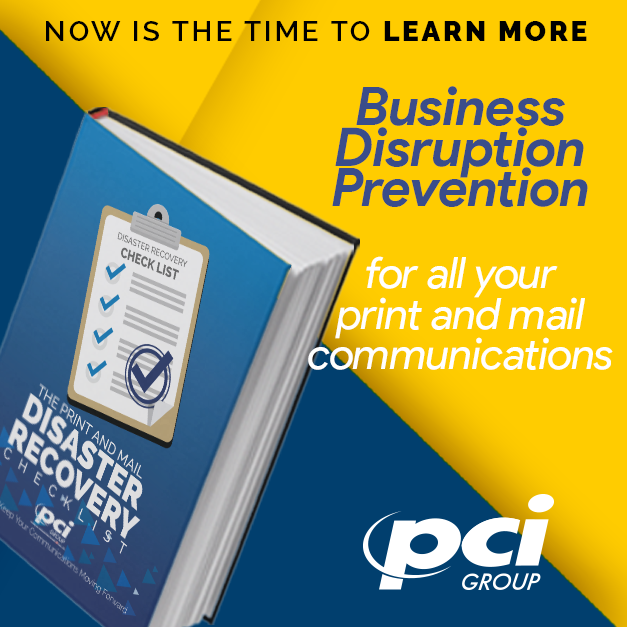
No company wants to plan for a disaster; what they should plan for is business continuity. While disaster recovery and business continuity are used interchangeably, there is a difference. The focus of business continuity is about keeping operations uninterrupted. Interruptions could be from a variety of sources, not just disasters. There are also other internal challenges that cause operations to be hampered like peak volume or scheduled maintenance.
So, what does a business continuity plan need? There are the foundational needs like power and internet connectivity. Then there are all the details, all the little things that each business must consistently complete or risk negative consequences. Falling under this critical category is printing and mailing of customer communications.
Print and Mailed Customer Communications Impact Other Areas
Print and mailed customer communications are most likely connected to major functions like cash flow and compliance. You can’t have these things disrupted. So, you have to plan for business continuity and all the things that may go wrong.
If you’re only becoming aware of your need for a plan as part of your responsibilities, then this post is a great starting point. You’ll learn about some of the very basics of these protocols and why they matter.
- Develop a way to prioritize.
It’s going to happen. At some point, you’ll have a list of mission-critical functions that need resources, but not enough to go around. That’s why you should prioritize from the beginning. Think about how some functions are interdependent so they must be lumped together. First, consider what is absolutely necessary to stay up and running.
- Choose your third-party carefully.
In any industry, there will be lots of business continuity service providers. When selecting a partner to facilitate your mailings when your operations are interrupted, there are a few basics you should think about:
- Where are there locations? Are they too close to you? This could be a problem in terms of weather-related incidents.
- What is their accuracy rating? While numbers in the 99 percentile seem impressive, remember that a 99.6% accuracy on 1,000,000 mailings leaves the company with 4,000 errors.
- Do they comply with all the regulations necessary for your business (state, federal, or industry compliance)?
- What type of equipment do they use? Is it the same or better than yours? Do they incorporate all the functionality you need?
- Set clear expectations.
These expectations aren’t just internal, as many companies will depend on third parties in their business continuity plan. If you currently run your print and mailing in-house but work with a third-party for business continuity, what’s your expectation of them? Your expectations should be set in the contract. You should know exactly when you can expect the vendor to start work on your jobs. Be sure you feel confident in the timeframe they’ve provided.
- Plan for what’s most likely to happen.
Anticipation is the leverage you can have against disruption. Depending on where your company is located, it may be more inclined to a flood versus an earthquake. Consider what has happened in the past in the region when planning. Beyond weather and natural disasters, think about the physical location of your equipment and why it may become compromised. It could be as simple as planning to move locations. If you moved all your print and mailing to a new space, you’d probably be down a few days. Although not a “disaster,” this still causes business disruption.
- Define roles and accountability.
In the time of an emergency, it’s best that everyone already knows their roles. It’s not the time to appoint others. Ensure your business continuity plan determines who within your department will be responsible for such actions like contacting your vendor, rerouting data, or other steps necessary to turn over print production.
Be Prepared for Anything
In the end, business continuity is about being prepared for anything. It can be overwhelming to consider every item that needs to be checked off. But we’ve made it a bit easier for you. Because we help thousands of companies with their disaster recovery of print and mail production, we’ve put together this handy Disaster Recovery checklist. Use it as a guide to develop or revise your plan for keeping your operations running.


